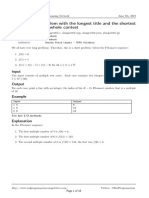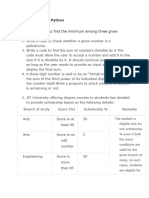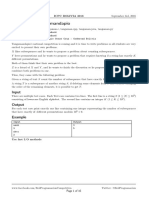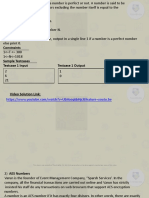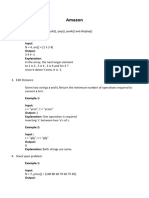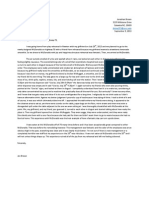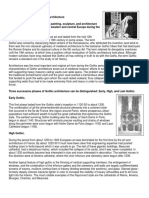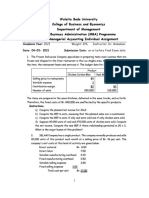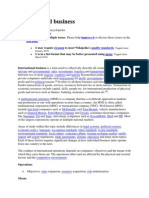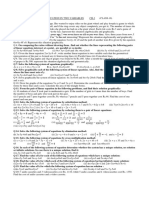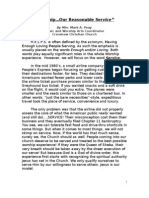0% found this document useful (0 votes)
7 views6 pagesPD Loop
The document outlines five programming problems related to sequences and calculations in a hospital and logistics context. Problem 1 involves generating a sequence of numbers with multiples of 4 amplified, Problem 2 focuses on calculating triangular numbers, Problem 3 deals with counting treated and untreated patients, Problem 4 calculates percentages of numbers divisible by 2, 3, and 4, and Problem 5 involves calculating transportation costs based on cargo weight. Each problem includes input data, expected output, and test cases.
Uploaded by
muhammadabdullahhafeez089Copyright
© © All Rights Reserved
We take content rights seriously. If you suspect this is your content, claim it here.
Available Formats
Download as PDF, TXT or read online on Scribd
0% found this document useful (0 votes)
7 views6 pagesPD Loop
The document outlines five programming problems related to sequences and calculations in a hospital and logistics context. Problem 1 involves generating a sequence of numbers with multiples of 4 amplified, Problem 2 focuses on calculating triangular numbers, Problem 3 deals with counting treated and untreated patients, Problem 4 calculates percentages of numbers divisible by 2, 3, and 4, and Problem 5 involves calculating transportation costs based on cargo weight. Each problem includes input data, expected output, and test cases.
Uploaded by
muhammadabdullahhafeez089Copyright
© © All Rights Reserved
We take content rights seriously. If you suspect this is your content, claim it here.
Available Formats
Download as PDF, TXT or read online on Scribd
/ 6



